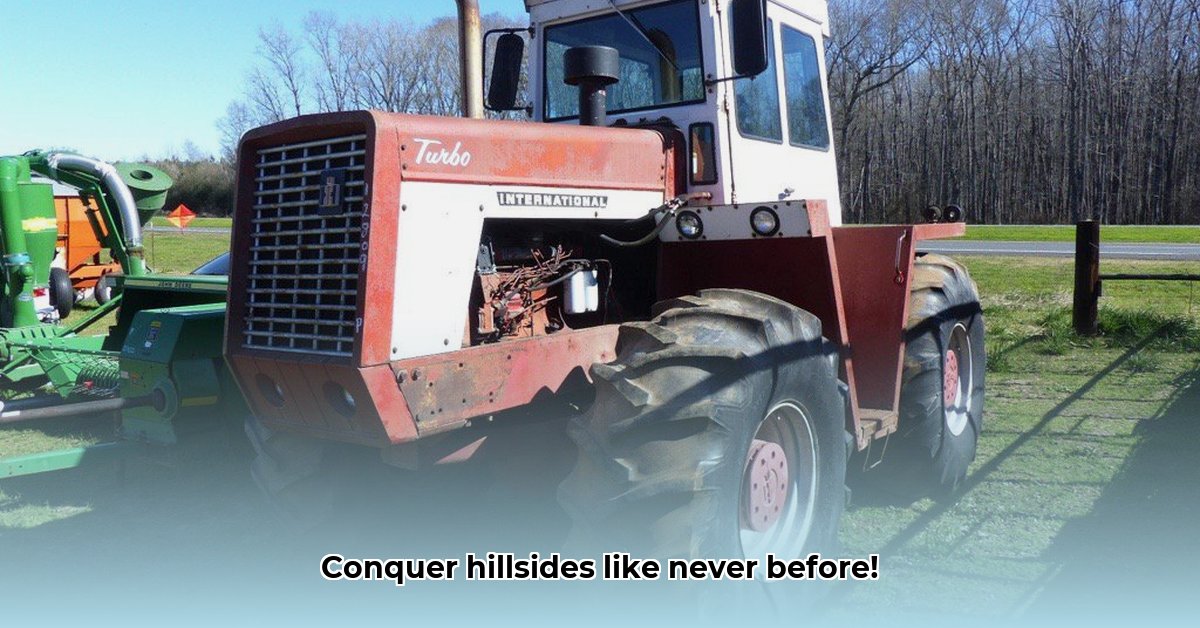
Crab Steer Tractor: A Blast from the Past, and Lessons for the Future
Crab steer tractors, capable of moving sideways and diagonally, once dominated hilly and uneven terrain. While less common today, understanding their history reveals valuable insights into agricultural innovation and the ongoing pursuit of efficient farming practices. For more on tractor attachments, check out this site on 3-point hitches.
How Did Crab Steering Work?
Unlike conventional tractors, which turn by pivoting wheels on a single axle, crab steer tractors allowed each wheel to pivot independently. This unique system, similar to a tank's mechanism, enabled movement in any direction, including sideways and diagonally. This exceptional maneuverability was particularly beneficial in challenging agricultural environments.
Advantages of Crab Steer Tractors
Crab steer tractors' main advantage lay in their superior performance on uneven terrain. Several key benefits contributed to their popularity:
- Unbeatable Hillside Traction: The independent wheel movement ensured even weight distribution, minimizing wheel slippage on slopes. This provided superior traction compared to conventional steering systems, especially in challenging conditions. One user on Yesterday's Tractors forum reported, "My old Ford with crab steer never lost traction, even on the steepest parts of my farm."
- Reduced Soil Compaction: The wider distribution of tire tracks reduced soil compaction, proving beneficial for sensitive crops and overall soil health. This minimized damage and potentially increased crop yields.
- Exceptional Maneuverability: The ability to move sideways and diagonally allowed for navigation of tight spaces, headlands, and irregularly shaped fields, enhancing efficiency in confined areas.
Disadvantages of Crab Steer Tractors
Despite their advantages, crab steer tractors also presented significant drawbacks:
- Complex Maintenance: The intricate mechanical system required more frequent and specialized maintenance, resulting in higher maintenance costs and more downtime. A New Ag Talk forum user commented, "Those crab steer systems were a nightmare to fix."
- Limited Applicability: On flat, well-drained land, the added complexity of crab steer offered no significant advantage over simpler steering systems. Their benefits were primarily realized in specific, challenging environments.
- Technological Obsolescence: The advent of articulated steering and advanced auto-steer systems provided comparable maneuverability and traction with enhanced reliability and reduced maintenance needs, leading to the decline in popularity of crab steer tractors.
The Rise, Fall, and Potential Rebirth of Crab Steer Technology
The evolution of agricultural technology led to the eventual decline of crab steer tractors. Articulated steering offered a suitable compromise between maneuverability and simpler mechanics. The subsequent introduction of GPS-based auto-steer systems offered unparalleled precision and further reduced the need for manual maneuvering, solidifying their dominance in the market.
Modern Alternatives and Future Possibilities
Modern farmers have access to a diverse range of steering options tailored to various needs. Articulated steering continues to be a prevalent choice. Auto-steer systems, utilizing GPS and sensor technology, provide exceptional control and reduce driver fatigue. Ongoing research into advanced tire designs and traction control systems aims to enhance performance further in challenging terrain.
While largely obsolete, crab steer technology's core principles—enhanced traction and maneuverability—remain relevant. Future innovations in traction control, combined with the principles of independent wheel control, could potentially lead to a resurgence of crab steer principles in specialized applications or through hybridized systems.
Actionable Insights for Stakeholders
The following table outlines short-term and long-term actions for various stakeholders interested in this historical technology and its future potential:
| Stakeholder Group | Short-Term Actions | Long-Term Strategies |
|---|---|---|
| Equipment Manufacturers | Investigate niche applications for modernized crab steer systems. | Invest in advanced traction and stability technologies for all terrains. |
| Farmers (Specialty Crops) | Evaluate the suitability of used crab steer tractors for specific needs. | Transition to auto-steer and precision agriculture where appropriate. |
| Agricultural Historians/Collectors | Preserve and document the history of crab steer technology. | Create educational resources to share this unique piece of agricultural history. |
| Researchers | Model advanced traction and soil dynamics for different terrains and equipment. | Explore innovative solutions for sustainable practices in challenging environments. |
The crab steer tractor stands as a testament to human ingenuity in overcoming agricultural challenges. While largely a historical technology, the underlying principles continue to inspire innovation in the ongoing quest for more efficient and sustainable farming practices. The legacy of crab steer is a reminder of the dynamic nature of agricultural technology and its continuous adaptation to the diverse challenges of farming.